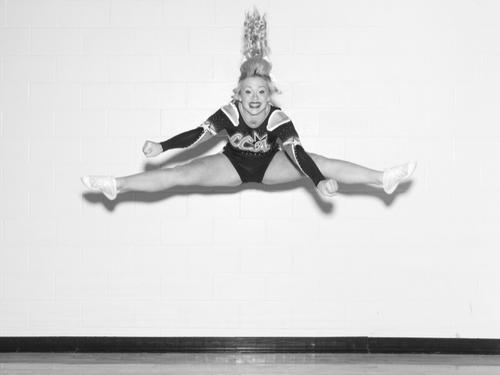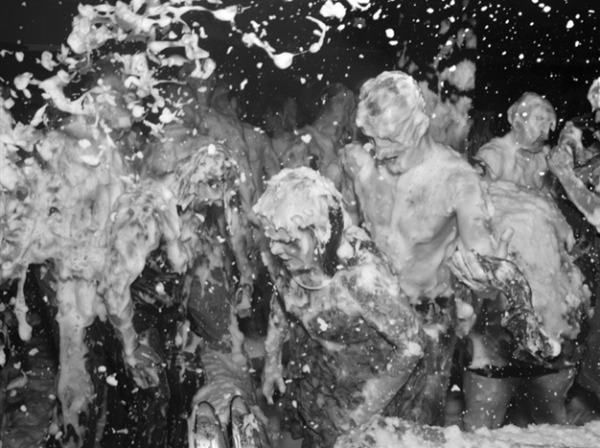Art & Exhibitions
Alec Soth’s Photographs of Hard-Luck America Dazzle
Can photographs of the non-famous be compelling to a celebrity-obsessed nation?

Courtesy Sean Kelly Gallery
Can photographs of the non-famous be compelling to a celebrity-obsessed nation?

What hangs in the balance between a community and a “web community”? The health of a nation, says photographer Alec Soth, who spent a busy two years between 2012 and 2014 crisscrossing the country documenting the simultaneous decline and evolution of American civic life.
On assignment for his own self-published newspaper, the LBM Dispatch, as well as the New York Times, Soth took on the guise of that rare professional bird: the community reporter. The ruse gave him cover to attend beauty pageants, proms, church socials, football games, Moose Lodge functions and various small-town gatherings. His resulting visual essay invites both nostalgia and anxiety—but of the sort normally leveraged for conspiracy theories and Tea Party rallies. Evocatively titled Songbook, the photographer’s collection of unsettling black-and-white images is now gathered between two clothbound covers (MACK, January 2015). It is also the subject of a single concurrent exhibition at three prominent U.S. galleries—San Francisco’s Fraenkel Gallery, Minneapolis’s Weinstein Gallery, and New York’s Sean Kelly.
Soth’s latest portrait of the state of the nation—previous books include Sleeping By the Mississippi and Niagara—harkens back directly to documentary photography’s golden age. An era in which rural and poor America got its first close-up, the period spawned several epic bodies of work that scrutinized the tails-you-lose side of the American dream. There was Robert Frank’s cross-country ramble in The Americans, Lee Friedlander’s transformation of public signage into “social landscape,” and Diane Arbus’s striking 1960s portrayal of America’s three alternative Ds—difference, deviance, and disability. Like these essential touchstones, Soth’s newest photographs turn a sympathetic eye on hard-luck America. They also enact the latest test-drive of the medium’s broken-down narrative possibilities.
Is photography really up to the task of relaying compelling serial images of non-rich, non-famous people to a celebrity-obsessed nation hooked on selfies? At Sean Kelly, at least, Soth’s 26 robustly sized, monochrome pictures suggest the answer is still yes. Portraits of regular people, places and things, these photos strive mightily—through smart lighting, nervy composition and an eye for threadbare detail—to establish their subjects’ resolutely average presence. Naturally, ordinariness is the stock-in-trade of these images; the artist’s mission, to monumentalize this quality with every done-upon face, bleak landscape and dull interior. Together, Soth’s photographs round out the contours of a previously literary location. This is America as Lake Woebegon. In Garrison Keillor’s words: “The little town that time forgot, and that decades cannot improve.”

Alec Soth, Crazy Legs Saloon. Watertown, New York. (2012).
Courtesy Sean Kelly Gallery
The sense of having been left out in the rain permeates a great many of Soth’s pictures—from the portrait of an older gentleman dancing in orthopedic shoes to the photo of grinning Dottie, from Denver, Colorado, in white gloves, lace bonnet and a hoop skirt (the works often incorporate names and locations into their titles). Images like these suggest millions of sparsely attended bridge tournaments and a small town demographic used to smiling through life’s indignities. A photo titled Miss Model Contestants, Cleveland, Ohio reinforces the idea for newer generations. An image of teenage aspirants to a beauty crown, it includes three average sized girls, and a fourth pint-sized gal literally dwarfed by the contest’s outsize ambitions.
Unmet expectations, of both the individual and communal kind, haunt Soth’s photographs. There’s the decidedly drab structure of the Magic Castle Inn and Suites, Kissimmee, Florida, shot against an avalanche-like advance of clouds, and a second picture that also tilts against retail-based magical thinking. Titled Abbot’s Magic Company, Colon, Michigan, the photograph depicts the proprietor’s back and thinning hair as he turns to face hundreds of filing cabinets full of unsold magic tricks. It is a vision of a dime-store Oz. According to Roahl Dahl, those who don’t believe in magic will never find it. But what about those who continue to believe in the bountiful promises of tiny towns despite the evidence?
In a somber exhibition about community with few group portraits (the book has more), Soth’s pictures at Sean Kelly are not without harsh judgment. Not a few of the artist’s photographs of these beleaguered folks and their hamlets feature the shadow of death. These include an image of a deserted North Dakota shack, an Ohio funeral park, and a disturbing photo of dozens of Texas sheriffs marching in lockstep toward an execution. But two other images sound a life-affirming note. Bookend pictures of the same high school prom, they feature, respectively, an interracial couple and a homosexual pair, locked in lovers’ embraces on a packed dance floor. An important detail delivers a pilot light of hope amid the crush: There’s not an angry or menacing stare in sight.